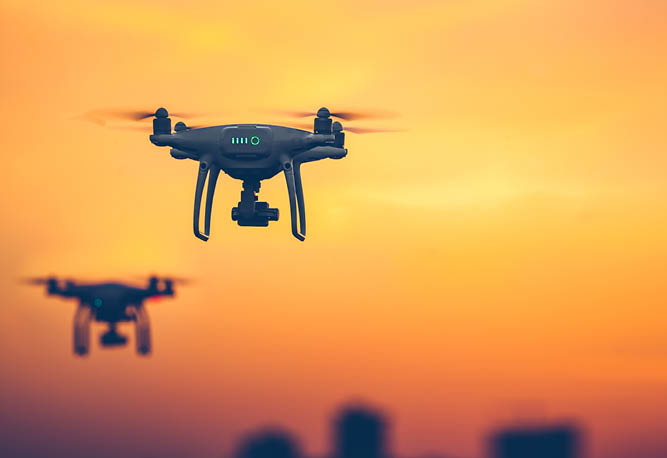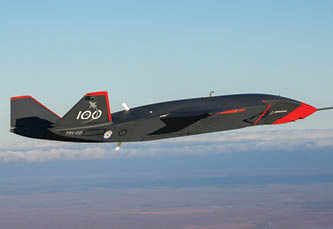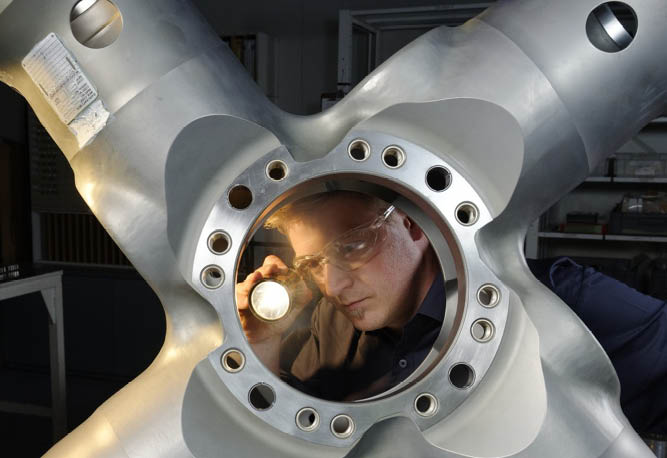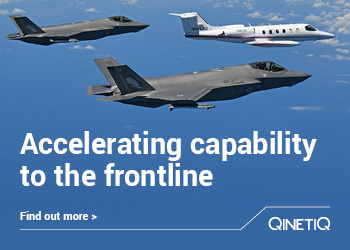Wayne Condon is Group CEO and Chief Pilot of UAV training Australia. He spotted a gap in the market, to launch one of the country’s first and now, most respected UAV pilot training schools 10 years ago. He has seen firsthand how the drone (or UAV) industry has seemingly come out of nowhere, to revolutionise huge aspects, not just of aviation, but many other industries too. He has also seen firsthand how COVID has accelerated the progress for the industry and made many traditional airline pilots consider making the switch to UAVs.
If we step back in time only five years ago, remote pilot aircraft systems, or drones, literally weren’t even on the shelves at department stores like JB Hi-Fi or D1 Stores around Australia, and it’s really taken off rapidly. A lot of people are on the crest of this wave.
Drone usage is certainly on the increase. Whether it be private use or organisations realising they can achieve outcomes faster, safer and more efficiently by using drones to gather data, the industry is growing at a rapid rate.
These days drones are being used across a multitude of industries for various reasons. For example, marine biology, agriculture, for data and research purposes. The Defence Force is playing in a big space with the new Boeing Loyal Wingman project just released.
Real estate agencies and surveyors are using drones. Law enforcement agencies and councils are using drones to monitor areas. So, besides the normal office space, nearly everyone these days has some form of a remotely piloted aircraft system platform as a secondary tool to their operations.
But it’s not just all about the drone. The technology and data capture drones can also now provide is changing the way organisations work.
We provide support to one of our largest clients, HQ Plantations in Queensland for both forest management, surveillance and fire operations. One of the drones we use has the capability of 3D imaging. This imaging is basically using infrared technology capability of 200 times zoom and a light laser range distance finding system. Where they were using manpower to go and walk or do things by hand, we did a hectare of operation for them the other day that normally took up to six hours and this took the drone nine minutes to do the same job.
COVID has had a devastating impact on many individuals and organisations. However, for us it has seen our businesses grow at a rapid rate. As organisations adopt new technologies and begin to implement drone solutions into their businesses the demand for qualified drone pilots has increased and one logical way to fill these positions was to look for individuals with aviation backgrounds…. Pilots.
We’ve got pilots with over 18,000 hours working with us, from A380 to 777 captains, who bring with them the basic aviation skill sets – understanding how to read the weather, situational awareness, risk management, human factors and how to do flight planning.
What our senior staff did was retrain them in how drones actually work and how to fly and operate a drone, or remotely piloted aircraft system. Many under the civil aviation requirements didn’t need to do the theory component. They only had to do practical elements. However, they realised early it is a totally different platform. It’s not like sitting in the cockpit of the Dreamliner where everything’s at your fingertips, and you can see it. With a drone, besides controlling from a platform or from a control station, you can’t actually feel what the drone is doing in the air. You have to know more theory in relation to flight to that aircraft, then actually sitting in a conventional aircraft itself.
Most airline pilots flying in IFR airspace and most of our test pilots are flying in G class so it’s a totally different set of rules. They had to understand restricted airspace and different prohibited areas which when flying bigger aircraft don’t exist. A lot of these seasoned pilots had to go on a backwards journey to learn all the basic training they would have picked up in their commercial pilot training when stepping out to be airline pilots.
The one thing they all say is, it’s really hard to get their head around how these things fly when you’re not sitting in them, because when something goes wrong, at least with an aircraft it gives you an indication. With a drone, you don’t feel it. You can only see something with a heads-up display, or your instruments system saying there is something where there is an error. It’s up to you then to work out how to fix that.
Those who have come from a conventional manual, you pull out the pilot operating handbook and start going through your system procedures. Whereas a drone pilot doesn’t have the luxury of pulling a pilot operating handbook because most of the times you are flying, yourself and another pilot, and it’s something you don’t have readily at your fingertips. It’s all about analysing what’s going wrong. Some of the technology we are using is very sophisticated with artificial intelligence. There’s a lot to learn. I think that’s been a very steep learning curve for people coming in from conventional aviation into the RPAS drone world.
The biggest thing is, if you consider your human factors, the five senses, sight is one of the biggest things we use in everyday life. When you’re flying a done or an RPAS, you are literally looking at a heads-up display, so you lose that sense of feeling. What is the drone actually doing itself? I’ve seen people flying a drone sideways. They’re oblivious thinking the drone is flying straight and level and the payload is based in the direction of flight. When they get closer, they realize the whole drone has been flying at a 90-degree angle through the air because they’ve lost situational awareness and didn’t realise.
In the last 12 months, our organization has trained close to 500 year 10, 11, and 12 Queensland school students in our Drones in Schools program – that’s a lot of students. This year there is even more rolling into 2022. The kids of today are very good at artificial intelligence. They’re very tech savvy and their hand-eye coordination is all about working with computers. A lot of kids we’ve spoken to now aspire and want to work within the drone or the unmanned aerial systems platform. Defence has rapidly identified that with the launch of the Boeing Loyal Wingman, which is almost the size of a FA18 but actually an unmanned aircraft. The public can see this live now. It’s an impressive aircraft and they’ll be recruiting pilots through this system.
Close to 10 years ago, I was involved in the manned side of aviation with an AOC, and a charter company but there were many other people were doing the same. Then I started working in areas with the Defence Force and other agencies and we started talking about drones. The biggest thing I started to see is there wasn’t too many people out there doing it. Information and training were hard to get hold of. Companies like DJI didn’t exist. We did a lot of research and development in this area and decided to change take and merge our AOC components of manned aviation into an unmanned or remotely piloted drone platform.
At the time the Civil Aviation Safety Authority didn’t have a UAV branch. When you’d speak to them about drones, they would scratch their head and go, “Look, you need to speak to someone from the helicopter section.” There was just nothing out there.
We’ve all watched the Jetsons as kids and laughed. We are beginning to see this become a reality. We’ve already got organisations like Uber Air looking to fly short passenger air taxis. You’ve got Careflight up in Queensland, looking at air flying ambulances without pilots, Wing doing drone delivery trials in QLD and ACT, and DHL is already doing delivery in the US so we watched closely how this was evolving.
I used to go to meetings with CEOs of large aviation companies and talk about drones. I remember them walking out the door because they didn’t believe what I was saying, thinking they we were going to replace people. It’s not replacing somebody, it’s literally adding to their tool kits in a better way, another platform they can use to their advantage. Now it has literally overtaken the conventional world. I think that’s the biggest and hardest thing I’m finding at the moment is the sides of military area. There are not too many civilian organizations you can go to for guidance, because you’re already at the top of the pinnacle waiting for that next wave to come through to lift you up to that next level again.
The manned world, or conventional world, has been there for a hundred years. The military has been the biggest user in the last 20 years, but in the commercial space, it’s only the last part of 10 years people have actually taken notice. The first thing most of the fire agencies say during a crisis is, “Get the helicopters up.” And we’re saying, “What about the drones?” They go, “Oh, that’s right. We forgot about those things called drones.”
The curve, or wave, started picking up when manufacturing costs reduced compared to conventional aircraft. The biggest thing is to have a drone in our fleet – that’s worth about $50,000. A lot of people gasp when you say that, but to have the equivalent in a helicopter is about $1.8 million, and it’ll do exactly the same with the camera gear, except we don’t have a flight crew, and we don’t have a big turbine engine on board. The biggest thing is that cost where that leap, to get a helicopter up, one of their clients spent an excess of a $100,000. The drone would have cost them $4000 for the same amount of flight time.
As technology has changed, it has become cheaper. Most people have only started buying 4K TV, but the drones have had these in place for nearly eight years. We’ve had to wait for that technology to catch up so we can actually view aerial mapping and 4K capability because it wasn’t developed from a retail point of view. It’s definitely the cost that has made it more obvious and they’re still not a cheap platform, but people seem to embrace it. People have gone out and spent $1000 on a Mavic Mini or a Mavic Enterprise or Mavic Pro Series for their kids. When I was young, that was a lot of money. Now, it just seems to be, “let’s go out and buy it.”
The potential for growth in this industry will keep developing rapidly. We’ve got everything from sixth sense artificial intelligence, where a drone has the capability of flying through an object and working out artificially exactly where everything is right down to 0.1 of a millimeter of distance. You’ve got speed grips in buses and aircraft, like altitude, speed and take off. One of our latest drones even tells the weather, wind speed and direction.
If you don’t embrace technology, you get left behind. When it first came out, I was shy of the iPad or the Apple pencil and how things work. Now, if you are not up with that you are literally getting left behind. In the drone space, as these two merge, it’s going to become common practice. There are drones now with AI technology already built in. It’s up to the end user to understand how it actually works, and it’s evolving quickly.
They’re doing stuff overseas now you would never thought would ever exist, and they are asking themselves “Why weren’t we doing this five years ago?” People don’t embrace technology at the time, or they’re very reluctant because of the way they’ve been involved in that process. How many smartphones have evolved over the years and how many have changed from number one to number 12. That’s what drones are doing right now.
Technology advances quickly. You only need to look at how many different drones have been developed since the start of the COVID outbreak and how much they have changed in each and every version. The technology of artificial intelligence, the electronics and everything that’s built into these things, is getting far more superior, flight time is getting actually longer. The safety is just getting to a point where incidents are very minimal and without any human input it is amazing.
Australia is in a particularly good position to take advantage of this revolution particularly in areas of rapid medical supplies, or incident control because we’re such a big nation. That distance is vast. We are in an area where we can really accelerate these systems. For example, in Queensland, they’ve built a drone testing centre near Cloncurry. They’re spending millions and millions of dollars for people to test drones out there. Australia is in a very good position and leading the world in a lot of these areas. Even the qualifications and experience these people have is really unrecognised to the rest of the world.
I spent some time last year overseas with an organization training in Europe, their chief pilot program. And it didn’t come close to our standard CASA licensing course. They didn’t realize how in-depth Australia actually goes and how much they’ve actually implemented or put into place This phenomenon is growing bigger. If you buy a drone today, it’s going to be different within a few months. That’s how quickly these things are moving.
I absolutely love what we’re doing in both a training and operational capacity. Being involved with Defence, Government agencies and other commercial organisations is exciting!
It’s so new people talk about it, but you’re literally at the tip of that spear. And that’s the bit that’s enjoyable. Seeing people embrace the technology and opening up their eyes to what is now becoming the norm is fantastic. The thing I like is it’s not going to disappear. Some of those organisations who weren’t interested, they’re now heavily invested in drone capability. I’m looking forward to going back and meeting them again. They’ve realised, if you don’t keep up with technology, you get left behind.
You do feel a little bit like the Wright brothers, where no one’s actually flown it. So people look and go, “What happens when you press that button?” You go, “Well, I’m going to tell you in a minute.” You all cross your fingers.
Wayne Condon – PODCAST extract















